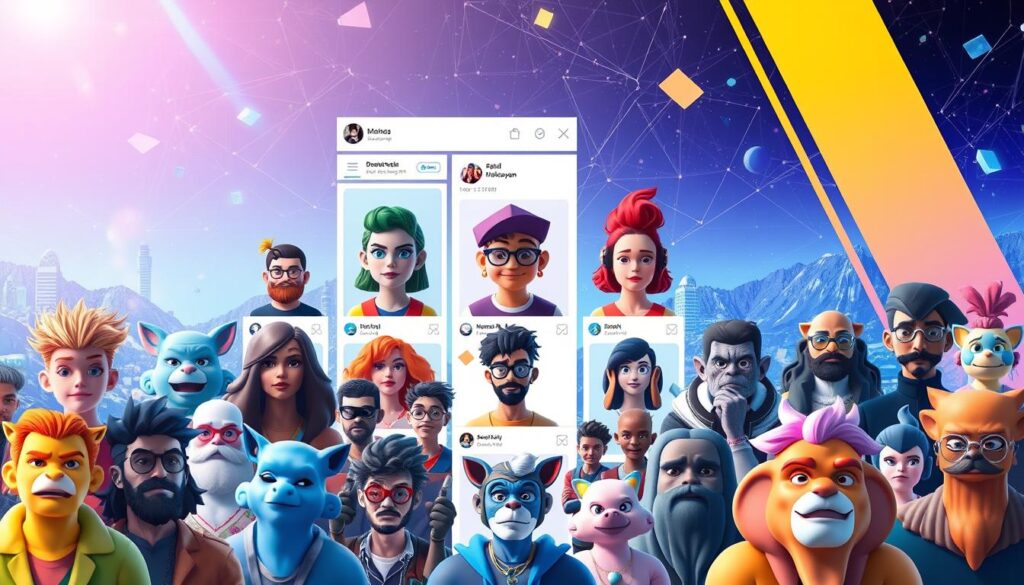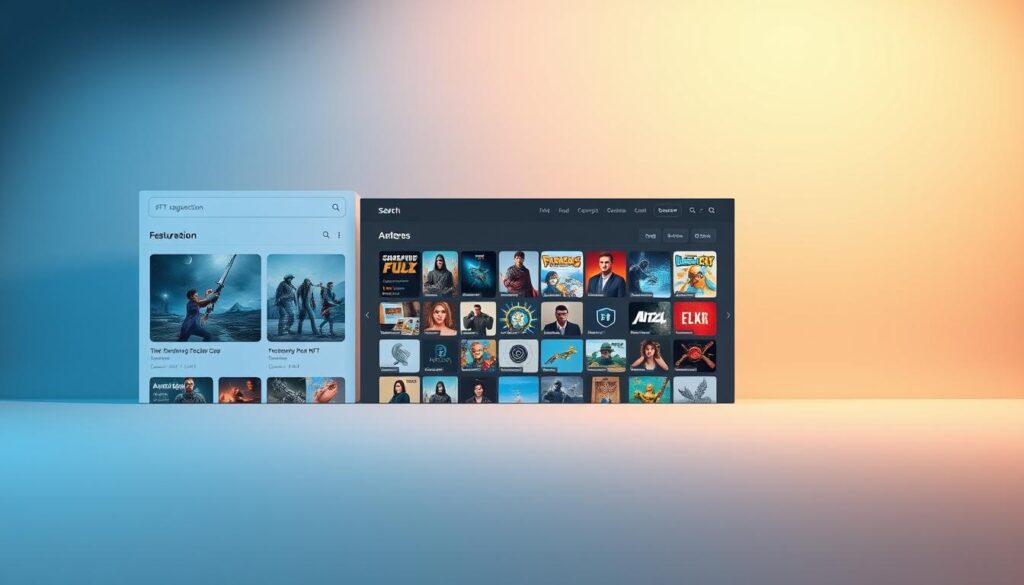Now Reading: NFT Gaming Assets in Game Items: A Comprehensive Guide
- 01
NFT Gaming Assets in Game Items: A Comprehensive Guide
NFT Gaming Assets in Game Items: A Comprehensive Guide

For decades, enthusiasts have invested countless hours building impressive collections within their favourite virtual worlds. Rare weapons, exclusive character customisations, and powerful tools often hold significant emotional and practical value. Yet these prized possessions have traditionally existed only on centralised servers controlled by game publishers.
A technological shift is now redefining this relationship. Blockchain technology introduces a decentralised ledger that records ownership transparently and securely. This innovation enables players to establish genuine sovereignty over their digital collections.
When someone acquires an item built on this technology, it becomes linked to their personal digital wallet rather than just a game account. This fundamental change means players can truly own their virtual possessions. They gain the ability to potentially transfer these items between compatible experiences or trade them on specialised marketplaces.
This guide explores how this evolution transforms player engagement with digital worlds. We will examine the technical foundations, practical applications, and economic models shaping this exciting space.
Key Takeaways
- Blockchain technology enables verifiable ownership of virtual possessions
- Digital items can be stored in personal wallets outside game ecosystems
- Players gain sovereignty over their collections beyond single experiences
- This model creates new economic opportunities for enthusiasts
- The technology represents a significant shift from traditional centralised systems
- Compatible marketplaces facilitate trading between participants
The Evolution of Digital Ownership in Gaming
Digital collectibles have followed a fascinating journey from temporary licenses to permanent ownership. This transformation represents one of the most significant shifts in how participants interact with virtual worlds.
From Traditional In-Game Items to Blockchain-Based Assets
In conventional gaming experiences, enthusiasts never truly possessed their virtual acquisitions. These traditional in-game possessions existed solely on centralised servers controlled by publishers. Players invested time and emotion into collections that could disappear overnight.
The arrival of blockchain technology revolutionised this dynamic. Digital items built on this foundation belong to the participant rather than the company. This creates genuine ownership that transcends individual experiences.
Historical Perspectives and the Shift in Value Creation
Historically, value creation remained firmly in developers’ hands. Traditional games operated as closed ecosystems where all economic activity benefited the publishers. Participants had limited control over their investments.
This model created frustration when games shut down, wiping out years of collection building. The emergence of unofficial trading platforms demonstrated strong demand for true ownership rights that conventional systems couldn’t provide.
| Feature | Traditional System | Blockchain Approach |
|---|---|---|
| Ownership Control | Publisher retains full control | Player maintains sovereignty |
| Asset Transferability | Limited to single experience | Cross-platform compatibility |
| Permanence | Depends on game servers | Independent blockchain storage |
| Economic Participation | Publisher captures all value | Players share in value creation |
This evolution empowers communities while creating sustainable ecosystems. Developers can build deeper engagement through shared economic incentives.
Understanding NFT Gaming Assets in Game Items
Imagine a digital certificate of authenticity that is permanently recorded and cannot be replicated. This is the core principle behind the tokens revolutionising digital collections.
Defining NFTs and Their Unique Properties
Non-fungible tokens are unique digital tokens living on a blockchain. Unlike interchangeable cryptocurrencies, each one is distinct. A unique identifier makes every single token one-of-a-kind.
This non-fungibility is their most critical property. It creates verifiable scarcity and provenance. These characteristics are crucial for establishing true ownership and value.
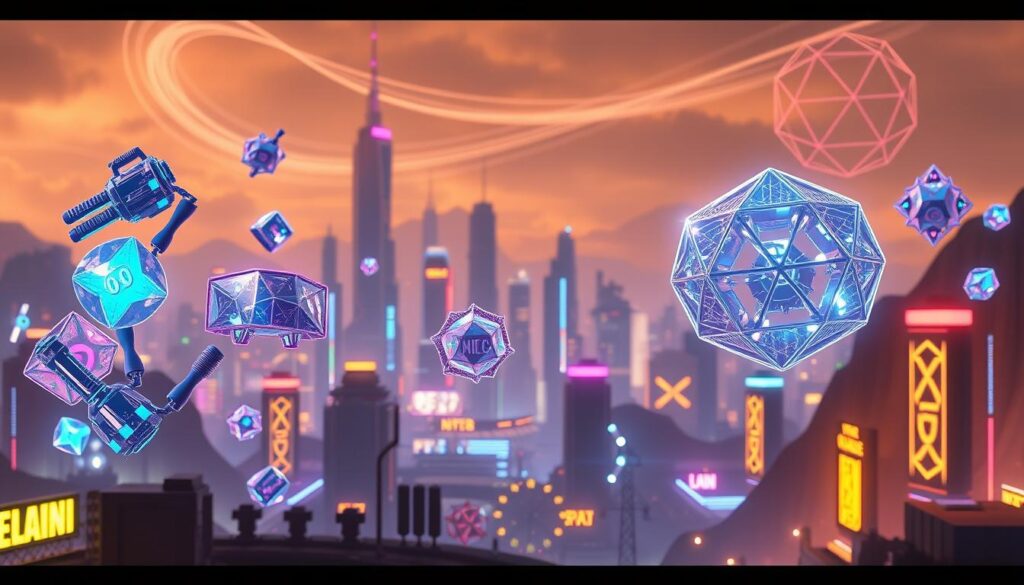
Smart contracts govern the creation and management of these tokens. Standards like ERC-721 enable this individuality. They can represent virtually any digital creation used in an interactive environment.
| Feature | Fungible Token (e.g., Bitcoin) | Non-Fungible Token (NFT) |
|---|---|---|
| Interchangeability | One unit equals another | Each unit is unique |
| Primary Function | Currency/Store of Value | Proof of Ownership |
| Divisibility | Can be divided into smaller units | Typically exists as a whole item |
The Role of Blockchain Technology in Gaming
Blockchain technology provides the decentralised ledger that records ownership. This foundation offers transparency and security that centralised servers cannot match. The permanence of this record is a fundamental advantage.
This technology ensures that a player’s acquisitions are secured independently. They are not tied to a single company’s servers. This shift empowers participants with genuine control over their digital possessions.
Blockchain Technology and True Ownership
Sovereign control over digital creations marks a revolutionary departure from traditional models. This shift empowers participants with indisputable rights to their virtual possessions.
Decentralised Ledgers and Secure Digital Wallets
Decentralised ledgers form the backbone of this new system. Unlike centralised databases, these networks distribute information across countless computers.
This architecture eliminates single points of failure. It ensures records remain accessible even if parts of the network go offline.

Secure digital wallets act as personal vaults for these possessions. Each wallet contains unique cryptographic keys that prove true ownership.
Only the holder of the private key can authorise transfers. This creates an unforgeable link between the participant and their digital assets.
How NFTs Secure In-Game Assets Permanently
Non-fungible tokens utilise cryptographic principles to create permanent records. Once recorded on the blockchain, these records cannot be altered or deleted.
This immutability provides security that traditional systems cannot match. It guarantees that players truly own their acquisitions forever.
The technology’s potential extends beyond single experiences, as explored in our analysis of blockchain technology’s potential. This permanence deepens emotional investment in virtual collections.
Interoperability and Cross-Platform Experiences
Interoperability stands as one of the most promising developments in the evolution of digital ownership. This capability allows users to move their possessions between various virtual environments seamlessly.
The technical foundation relies on shared blockchain infrastructure and standardised protocols. These elements create a connected ecosystem where digital items maintain their identity across different platforms.
Shared Universes and Cross-Game Avatars
Platforms like The Sandbox and Decentraland demonstrate practical implementations of this concept. Users can transport their avatars and wearables between multiple experiences.
Technical standards such as ERC-721 and ERC-1155 enable this functionality. They provide a common framework that different games can recognise and interpret.
| Aspect | Traditional Approach | Interoperable System |
|---|---|---|
| Asset Mobility | Limited to single platform | Works across multiple experiences |
| Technical Foundation | Proprietary systems | Open standards like ERC-1155 |
| User Benefits | Platform-specific utility | Enhanced value through versatility |
| Developer Opportunities | Closed ecosystem development | Shared universe collaborations |
This interconnected approach creates new possibilities for creative expression. Players can build consistent digital identities that transcend individual game boundaries.
The vision extends toward a metaverse where possessions gain utility through cross-platform functionality. This represents a fundamental shift in how users engage with virtual worlds.
Innovative Monetisation and Play-to-Earn Models
Economic participation in virtual worlds is undergoing a radical transformation. Traditional systems where participants spent money without earning potential are being replaced by innovative models that recognise player contributions.
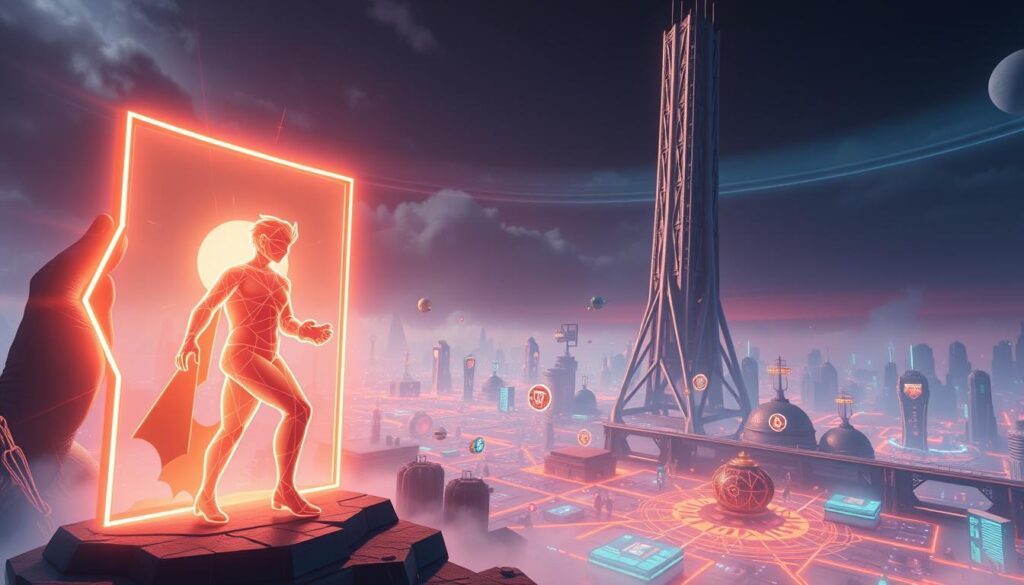
This shift creates mutually beneficial ecosystems where both creators and participants share in value creation. The play-to-earn approach represents one of the most significant developments in this space.
New Revenue Streams for Developers
Creators now access sustainable income through secondary market royalties. Each resale of digital items generates ongoing revenue, transforming one-time purchases into recurring income streams.
This model encourages long-term support and community engagement. Limited edition digital collectibles create excitement while providing financial stability for development teams.
Empowering Players Through Earning Opportunities
Participants can now generate tangible value through skilled gameplay. Successful titles demonstrate how dedicated players earn meaningful rewards for their efforts.
This represents a fundamental shift from traditional pay-to-win systems. The focus moves from financial investment to skill development and strategic participation.
As explored in our analysis of play-to-earn evolution, these models continue to mature. Hybrid approaches now balance entertainment value with economic incentives, creating more sustainable ecosystems for all participants.
Challenges, Ethical Considerations and Future Outlook
The integration of blockchain technology into interactive entertainment encounters both technical and ethical considerations that require careful navigation. These challenges span environmental sustainability, regulatory frameworks, and gameplay balance.
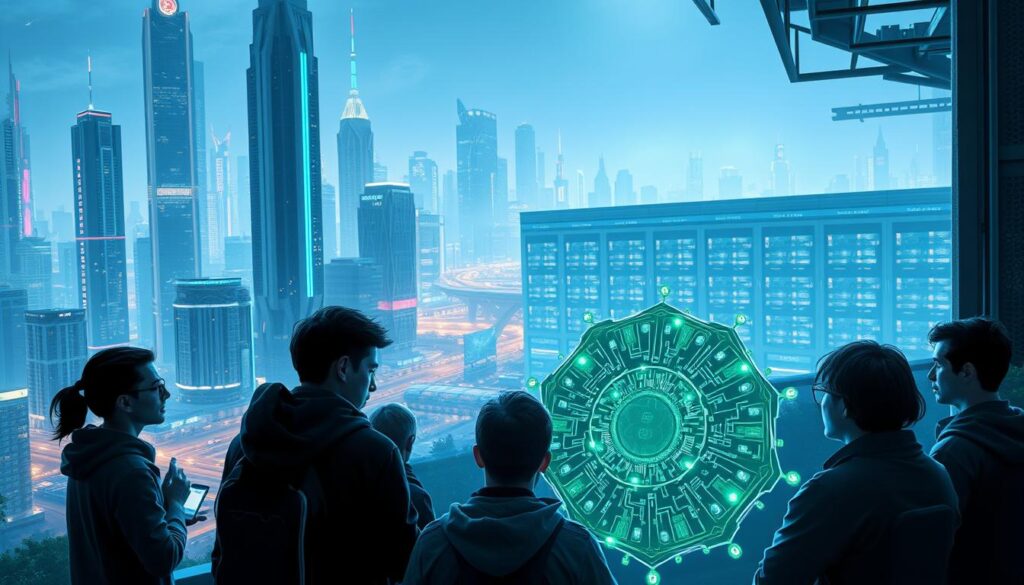
Environmental Impact and Sustainability Measures
Early criticism focused on the energy consumption of proof-of-work systems. Ethereum’s transition to proof-of-stake reduced energy use by over 99%.
Many contemporary projects now utilise eco-friendly alternatives like Polygon and Immutable X. This demonstrates the industry’s commitment to sustainable practices.
Regulatory Uncertainty and Market Speculation
Regulatory bodies worldwide are examining how digital collectibles fit within existing frameworks. The SEC has taken action against projects failing to comply with securities laws.
Market volatility remains a concern, as seen in dramatic value fluctuations. However, new models prioritise gameplay value over pure speculation.
| Platform | Consensus Mechanism | Energy Efficiency |
|---|---|---|
| Ethereum (Pre-2022) | Proof-of-Work | High Consumption |
| Ethereum (Current) | Proof-of-Stake | 99%+ Reduction |
| Polygon | Proof-of-Stake | Highly Efficient |
| Immutable X | ZK-Rollups | Carbon Neutral |
Emerging Trends and Next-Generation Ecosystems
Major publishers like Ubisoft and Square Enix are exploring web3 integrations. The focus shifts from financialisation to enhancing user experiences.
Projects like Guild of Guardians emphasise gameplay depth while creating genuine earning opportunities. This balanced approach promises more sustainable ecosystems.
Conclusion
Blockchain-based collectibles are reshaping the fundamental relationship between creators and participants. This technology enables true ownership that transcends traditional boundaries.
Developers now access sustainable revenue through secondary market royalties. Players gain unprecedented control over their digital possessions. This creates mutually beneficial ecosystems for all stakeholders.
Responsible implementation remains crucial for long-term success. Sustainability, fairness, and regulatory compliance must guide development. These considerations ensure balanced experiences.
The space continues to evolve through ongoing experimentation. Future implementations will likely emphasise gameplay depth alongside economic opportunities. This balanced approach promises more engaging virtual worlds.
Blockchain technology represents a foundation for next-generation entertainment. It enables sovereign ownership and permissionless interoperability. These principles can transform how we interact with digital creations.
FAQ
What exactly is a non-fungible token in the context of video games?
A non-fungible token (NFT) in video games is a unique digital certificate of ownership recorded on a blockchain. It transforms an in-game item, like a character skin or a weapon, into a player’s verifiable digital property that cannot be replicated.
How does blockchain technology ensure I truly own my digital items?
Blockchain technology uses a decentralised, public ledger. When you acquire an NFT-based item, the transaction is permanently and securely recorded. This proof of ownership is independent of the game developer’s servers, granting you control over your digital assets.
Can I use my NFT gaming assets across different titles and platforms?
The concept, known as interoperability, is a key potential of this technology. While not yet universal, some projects are building ecosystems where your avatar or items can travel between compatible games, creating a persistent digital identity.
What are ‘play-to-earn’ models and how do they work?
Play-to-earn models allow participants to receive rewards with real-world value for their time and skill. By completing tasks or achieving goals, players can earn cryptocurrency or unique digital assets that they can trade or sell on various marketplaces.
Are there any environmental concerns with blockchain-based games?
Early blockchain networks using Proof-of-Work consensus had significant energy demands. However, many modern platforms utilise more energy-efficient systems like Proof-of-Stake, which drastically reduces their environmental footprint.
What happens to my items if a game developer shuts down a project?
Because your ownership is recorded on the blockchain, the record of your assets persists even if the original game is no longer operational. The items remain in your digital wallet, potentially retaining value for use in other supported applications.


